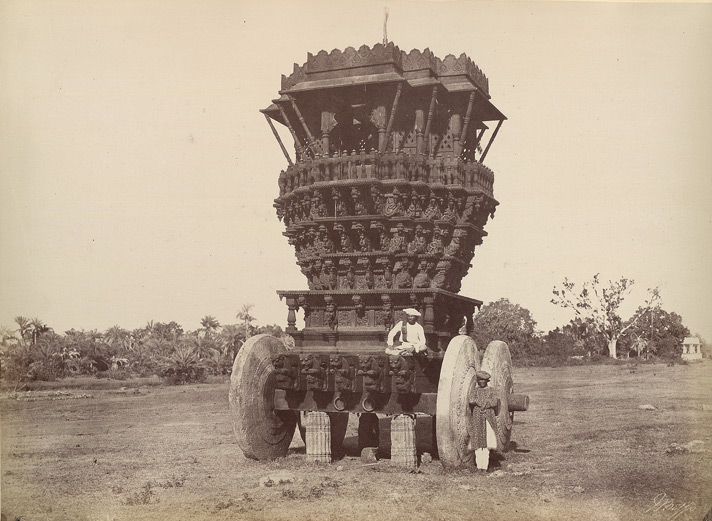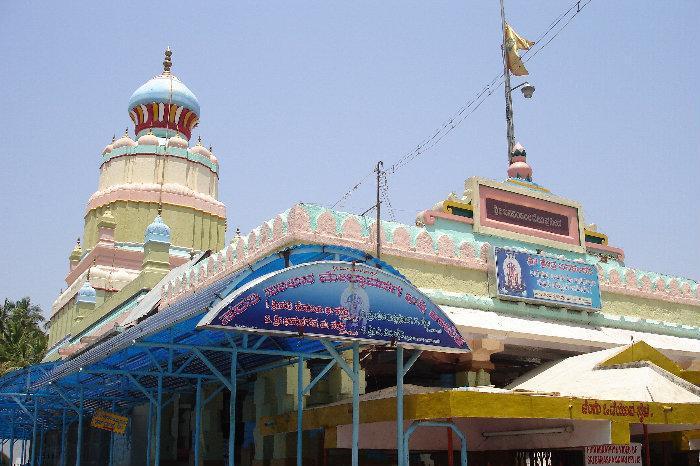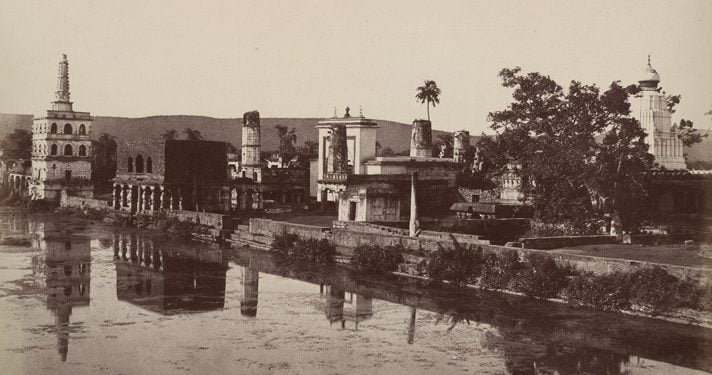Banashankari Devi Temple or Banashankari temple is a Hindu shrine located at Cholachagudd near Badami, in Bagalkot district, Karnataka, India. The temple is popularly called Banashankari or Vanashankari since it is located in the Tilakaaranya forest. The temple attracts devotees from Karnataka as well as the neighbouring state of Maharashtra.
Shrine’s History
Historians have dated the original temple to the 7th century AD – the Kalyani Chalukya period to Jagadekamalla I in 630 AD who installed the image of the goddess. The present refurbished temple was built in 1750, by Parusharam Agale, a Maratha chieftain. It is also said that the original temple was in existence even before the reign of the Chalukyas who gave royal favour to the beliefs of the Vaishnava, Shaivaite, Jain and Shakta religious orders. They worshipped Banashankari as a form of Shakti, their Supreme Goddess. Epigraphic inscriptions mention that Jagadekamalla I renovated the temple with several additions. Another inscription in Kannada language on a pillar located on the northern side of the temple dated to 1019 AD, describes the bravery of the Rashtrakuta king Bhimadeva. The Deepa Stambas are seen at the entrance to the temple; the construction of these, as per an inscription, are ascribed to the warrior Ketimayya

Legends Associated with This Shrine
The scriptures Skanda Purana and Padma Purana state that the demon Durgamasura harassed the local people constantly. Answering the prayers of the Devas who appealed to God through a sacrifice to protect them from Durgamasura, the Lord directed the goddess Shakambari to help the people. The goddess appeared through the fire of the Yagna in the form of the goddess Shakambari. She then killed the demon after a fierce encounter and restored peace in the region. Banashankari is considered as the incarnation of goddess Parvati, who is the consort of god Shiva. The forests around the temple have coconut, plantain and betel leaf plants and trees. Hence, it is also said that during a severe famine, the goddess provided vegetables and food for the people to survive and thus, the goddess was given the name Shakambari.
Architectural Relevance of This Shrine
The temple was built initially in the Dravidian architectural style. The rebuilt structure is in the Vijayanagara architectural style. The temple is enclosed by a high wall on all sides. The main structure has a mukha mandapa , ardha mandapa and a sanctum topped by a Vimana . The main sanctum of the temple has the image of goddess Banashankari deified in it. The black stone sculpture depicts the goddess seated on a lioness trampling a demon under her foot. The goddess has eight arms and holds a trishul , damaru , kapaalpatra , ghanta , Vedic scriptures and khadga-kheta . The goddess was the Kuladevi of the Chalukyas. The Devanga weaver community, in particular, holds this goddess in great reverence. Banashankari is also the tutelary deity of some Deshastha Brahmins.
There is a 360 ft square water tank in the forefront of the temple at the entrance, which is locally called as Haridra Tirtha, a corrupted version of the name Harishchandra Tirtha. The pond is enclosed with stone mantapas on three sides. A pradakshina or circumambulation path surrounds the tank. Lamp towers are seen in the foreground of the temple on the west bank of the pond and also at the entrance. The tower on the bank of the tank is also an uncommon guard tower which is “reflects the Vijayanagara blend of Hindu and Islamic style”. It is called the Victory Tower.

Shrine’s Map Location and How to Go There
By Road
The nearest bus stop is Badami
By Rail
The nearest railway stations are Badami.
By Air
The nearest airport is Hubli Airport Badami 84 km away, Sambre Airport (IXG), Belgaum, Karnataka 123 km away
Events Celebrated at This Shrine
Mahashivratri,Banashankari jatre













































